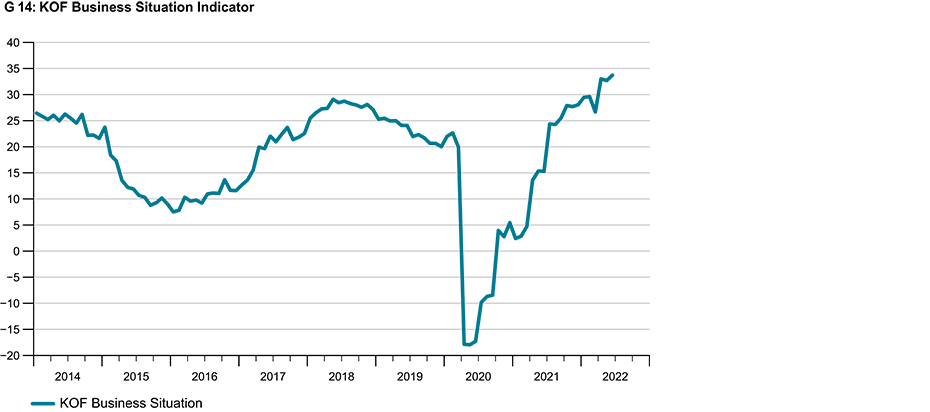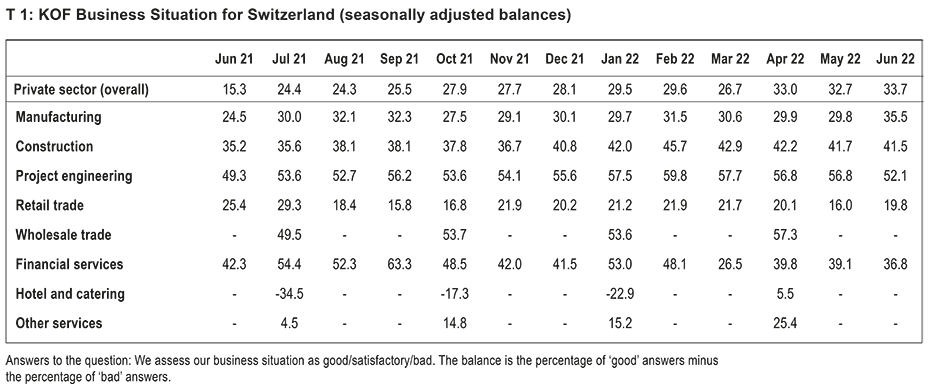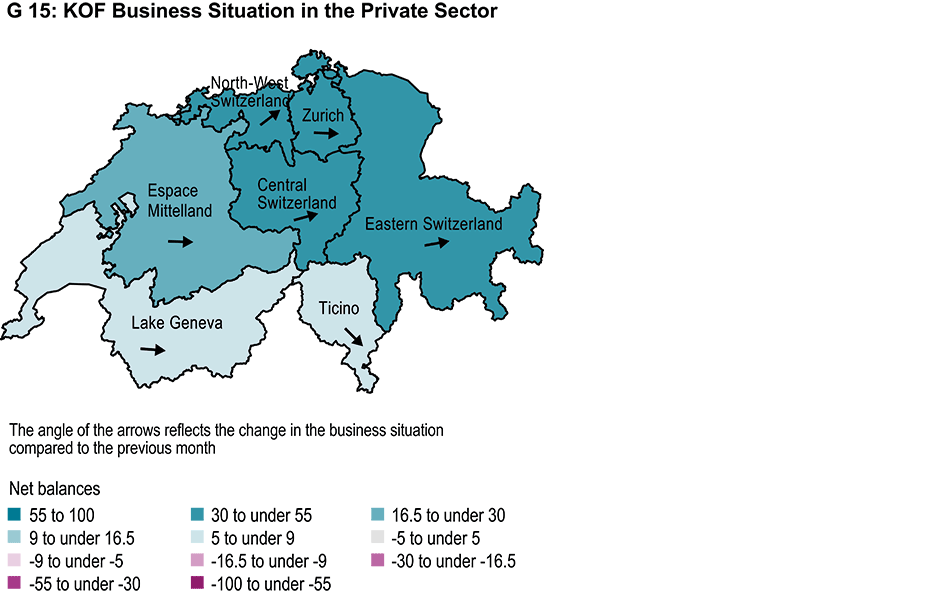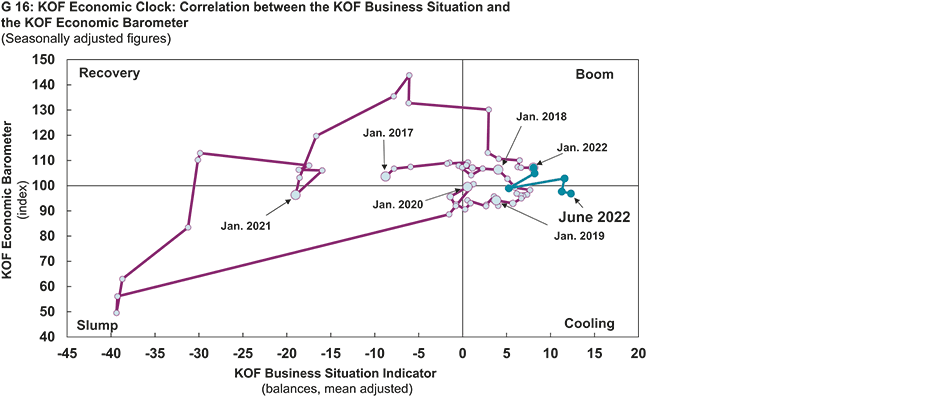KOF business situation: Swiss companies on a roll
The KOF Business Situation Indicator rose again in June, reaching a new high for the year to date. The manufacturing sector reckons that its business situation is significantly stronger than it was in the first five months of this year. Overall, the Swiss economy is currently robust.
The levels of business activity in the surveyed sectors varied fairly considerably in June. The business situation in manufacturing improved markedly. The situation among export-led companies in particular was viewed as being more favourable than it was in the previous month. Overall, firms were more satisfied with their order books than before and also managed to slightly replenish their stocks of intermediate products. The retail sector recovered in June after suffering a setback in the previous month. Sales of goods performed better than before. Price increases continued to be widespread in the retail sector. Price rises remained very strong in the construction industry as well. However, the business situation here improved very little in June. Although business activity at project engineering firms slowed, it remained predominantly buoyant. The situation in the financial and insurance services sector also deteriorated slightly. Business in this sector is now noticeably less encouraging compared with the beginning of the year.
From a regional perspective, the business situation improved particularly in Northwestern Switzerland. Business activity in central and eastern Switzerland was slightly more robust than in the previous month. It remained virtually unchanged in the Zurich region, Espace Mittelland and the Lake Geneva region. In contrast, business in Ticino was less encouraging than in the previous month.
The KOF Business Situation Indicator highlights companies’ current business situation. The KOF Economic Barometer, on the other hand, is an indicator of the economic outlook. The Business Cycle Clock shows that the economy was abruptly slowed by the pandemic in April 2020. After a rather disappointing start to 2021, the Swiss economy subsequently recovered. Although this recovery continued in the first few months of 2022, it slowed in the spring.
Explanation
Chart G14 shows the KOF Business Situation Indicator across all sectors included in the survey. The business situation of sectors that are only surveyed quarterly is kept constant in the interim months.
Chart G15 shows the business situation in the main regions as defined by the Swiss Federal Statistical Office. The regions are coloured differently to reflect their business situation. The arrows within the regions indicate the change in the situation compared with the previous month. An upward-pointing arrow indicates that the situation has improved compared with the previous month.
The Business Situation Indicator in the KOF Business Cycle Clock (Chart G16) is plotted against the KOF Economic Barometer. The indicator reflects the current business situation, while the barometer is a leading indicator of changes in activity. The clock can be divided into quadrants. During the recovery phase the business situation is below average but growth prospects are above average. At the peak of the economic cycle the situation and prospects are both above average. During the slowdown phase the situation is above average and the prospects are below average. At the bottom of the economic cycle the situation and outlook are both below average. Ideally the chart runs through the quadrants in a clockwise direction.
The KOF Business Situation Indicator is based on more than 4,500 reports from firms in Switzerland. Companies in industry, the retail sector, construction, project engineering and financial services and insurance are surveyed monthly. Businesses in the hospitality, wholesale and other services sectors are surveyed during the first month of each quarter. These firms are asked, among other things, to assess their current business situation. They can rate their situation as either ‘good’, ‘satisfactory’ or ‘poor’. The net balance of their current business situation is the difference between the percentages of ‘good’ and ‘poor’ responses.
Contact
KOF Konjunkturforschungsstelle
Leonhardstrasse 21
8092
Zürich
Switzerland




